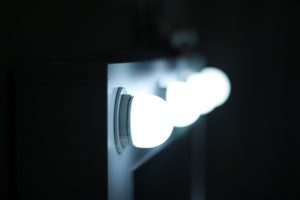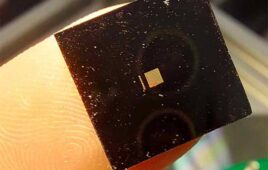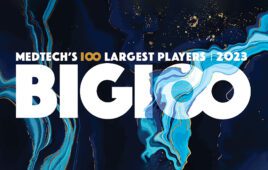
[Image from unsplash.com]
The technique works by activating nerves that express proteins using light. It can be adjusted in real-time using motion cues from the limb. The researchers suggest that the technique could produce smoother limb movement than other electrical systems that are typically used to stimulate nerves in spinal cord injury patients.
This optogenetic technique has so far only been tested in animals, but the researchers suggest that it could be used to restore movement in patients with paralysis in the future. It could also treat unwanted movements that happen with Parkinson’s disease.
“Most people are using optogenetics as sort of a tool to learn about neural circuits, but very few are looking at it as a clinically translatable therapeutic tool as we are,” said Shriya Srinivasan, a researcher on the project, in a press release.
Applications for the technology include restoring motion in paralyzed limbs and powering prosthetics. Optogenetic systems can also restore limb sensation, turn off unwanted pain signals or treat spastic or rigid muscle movements from neurological diseases, according to the researchers.
“Artificial electrical stimulation of muscle often results in fatigue and poor controllability. In this study, we showed a mitigation of these common problems with optogenetic muscle control,” Hugh Herr, lead researchers, said. “This has great promise for the development of solutions for patients suffering from debilitating conditions like muscle paralysis.”
Electrical stimulation of nerves has been clinically used to treat treating, bowel, bladder and sexual dysfunction in spinal cord injury patients. It has also improved muscle conditioning in people who have muscular degenerative diseases and can control paralyzed limbs and prosthetics.
In typical electrical stimulation, electrical pulses are sent to nerve fibers called the axons where muscle movement is triggered by the fibers. This electrical stimulation can quickly fatigue muscles and can be painful, according to the researchers. It can also be hard to target precisely.
Optogenetic stimulation uses nerves that have been genetically engineered to express light-sensitive algae proteins known as opsin. The proteins are what controls electrical signals like nerve impulses. Exposing them to certain wavelengths of light can turn them on and off.
The researchers have engineered mice and rats to express opsins in the leg to control the up and down movement of the ankle joints when switching on an LED light attached over the skin or implanted in the leg.
The closed-loop system is able to change its stimulation in response to signals from the nerves they are activating. In the rodents, the different cues included the ankle joint angle and changes in the length of muscle fibers. The researchers say that the system observes and reduces error in real-time.
Tests of technique also showed that optogenetic stimulation could lead to less fatigue during cyclic motion when compared to electrical stimulation. Electrical systems have large-diameter axons that are activated first with large, oxygen-hungry muscles before smaller axons and muscles. Optogenetics works by stimulating smaller axons before moving on to the bigger fibers.
“When you’re walking slowly, you’re only activating those small fibers, but when you run a sprint, you’re activating the big fibers,” Srinivasan said. “Electrical stimulation activates the big fibers first, so it’s like you’re walking but you’re using all the energy it requires to do a sprint. It’s quickly fatiguing because you’re using way more horsepower than you need.”
The light stimulated system also had a different pattern than electrical systems.
“When we kept doing these experiments, especially for extended periods of time, we saw this really interesting behavior,” Srinivasan said. “We’re used to seeing systems perform really well, and then fatigue over time. But here we saw it perform really well, and then it fatigued, but if we kept going for longer, the system recovered and started performing well again.”
Opsin activity cycles in the nerves resulted in the unexpected rebound, allowing the system to regenerate, according to the researchers.
The researchers plan to test the system further to find the best ways to deliver light to nerves deep in the body while also finding ways to express opsin in human nerves safely and efficiently.
“There are already some 300 trials using gene therapy, and a few trials that use opsin today, so it’s likely in the foreseeable future,” Srinivasan said.
The study was published in the journal Nature Communications and was funded by the MIT Media Lab Consortium.




